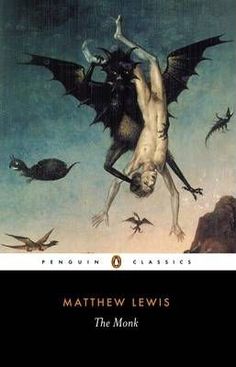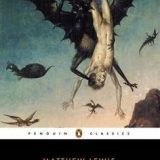
The Monk (Lewis) / Seven Gothic Tales (Blixen)- Matthew Gregory Lewis
The Monk – Matthew Gregory Lewis – 1796
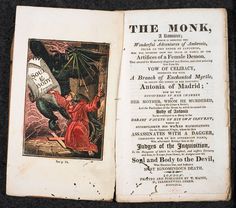
Seven Gothic Tales – Karen Blixen (Isak Dinesen) – 1934
Posted by guillermo maynez on 30/10/2013, 17:31:49
I’ve turned Gothic after reading these two books. Not surprisingly, since they were written with 140 years between them, they are very different. “The Monk” is a fantastic (in both senses) romp in morbidity. Remember that AIDS-era pop song: “People are still having sex and nothing seems to stop them”? Well, the same happened to Counter-Reformation Catholicism. Lewis, of course, writes from the point of view of a Liberal Englishman, horrified of the Inquisition and the Medieval backwardness of Spain (and who can blame him?), and hilariously he confuses Italy and Spain in his nomenclature of people and places. The great fun of the book aside, his point is very clear: the imposed celibacy and savage repression of natural instincts conducted by the Catholic Church can only result in sexuality popping out in devious ways, joyously tortured by the idea of Sin, and becoming an obsession more than a natural urge. Ambrosius the Monk could have been a brilliant man of letters, or political leader, but his lifelong internment in a monastery leads him to fornicate and kill. How sad. Oh, but it wasn’t his fault only. Satan did his part.
“Seven Gothic Tales” are very beautiful pieces of modernist literature mimicking the Early Romantic (Gothic) literature of England. There is nothing archaic about Ms. Blixen’s tales, except mood and scenery. The Freudian nature of her character’s nightmares, visions, and obsessions make the stories very 1930’s, and the way they spin off towards subplots and digressions add in that direction.
Did anyone else read them? I enjoyed both.
~
Posted by Steven on 31/10/2013, 7:34:09, in reply to “The Monk and Seven Gothic Tales”
I read The Monk not too many years ago and enjoyed it immensely. I agree with what you’ve said about it. Its sexual candor really surprised me. Another thing I was surprised to learn was that Jane Austen not only read it but appreciated its literary merit. So just because she didn’t choose to put any sex in her novels, that doesn’t mean she was a prude.
I’ve started a personal reading cycle that I call “literature of the fantastic” in which I’m reading early works in the science fiction, fantasy, horror and gothic genres, starting with More’s Utopia. I’m still in the 18th century, but one of the books on my schedule when I get to the 19th century is Zofloya, or The Moor by Charlotte Dacre. It is said to be the feminine counterpart to The Monk. You might want to give it a try.
~
Posted by guillermo maynez on 31/10/2013, 18:59:16, in reply to “Re: The Monk and Seven Gothic Tales”
Great, it would be nice if you shared some of your thoughts on the books you are reading, for example “Utopia”, which I read many years ago.
~
Posted by Steven on 1/11/2013, 12:11:19, in reply to “Re: The Monk and Seven Gothic Tales”
: Great, it would be nice if you shared some of your
: thoughts on the books you are reading, for example
: “Utopia”, which I read many years ago.
Okay, this is probably much more than you wanted. Here is my review of Utopia, followed by some random thoughts on More’s Utopia compared to Plato’s Republic. In a separate post I’ll just list my other past and planned reading, and if there are any you are particularly interested in, I can post those reviews too.

Utopia by Thomas More
First published in Latin 1516
English translation by Paul Turner 1965
Utopia is simply one of the most important and influential books ever written. Its ideas were then (and for the most part still are) so revolutionary that it can be difficult to believe a man with Thomas More’s subsequent history even intended them to be taken seriously.
More wrote Utopia in Latin, the language most widely read at the time by educated persons in Europe. It is also a language independent of place and time, which translator Paul Turner says is ample justification for using informal contemporary English in his translation. The result is highly readable and entertaining, but no less thought-provoking.
The structure of the novel has More himself recounting a conversation he had with a traveler named Raphael who had spent five years living in Utopia, an island roughly 200 miles in diameter located somewhere in the New World. More has all the opinions and observations come from Raphael’s mouth rather than his own, obviously to protect himself from being charged with promoting seditious ideas. But while Utopia does satirize a few of Europe’s governments and institutions, it is not an attack on any particular person or country, and this is what has kept it relevant over the centuries.
The most radical and most important feature of Utopia is that there is no private property and therefore no need for money. People dress identically and live in identical houses in identical towns. They each work at the trade for which they are best suited, usually the same as their parents. Families are sent in rotation to work on farms, the assumption being that farm work is less pleasant and should be shared by all. Military training is compulsory for both sexes, and the entire town is turned out from time to time for major projects such as roads, bridges, and fortifications. Slavery exists, but only as a form of punishment for serious crimes. All children are born free and equal and raised in identical circumstances.
With no need for luxury goods and no idle classes, productivity is so high that Utopians need work only six hours a day. The rest of the time is devoted to self improvement and recreations such as music. Utopians do their work gladly, for the most part, out of community spirit. But those who might otherwise slack off know that “Everyone has his eye on you, so you’re practically forced to get on with your job, and make some proper use of your spare time.” Goods are taken to markets and storehouses where anyone who needs something just helps himself. Meals are served in communal halls where the elders are served first out of respect.
There is freedom of religion in Utopia, at least to a point. Citizens are expected to believe in a creator and an afterlife and to attend religious services, but there is no official dogma, and sects are allowed to follow their own beliefs and practices as long as they don’t proselytize in public. Atheists are tolerated, but they are considered contemptible and are barred from positions of public trust. That Thomas More would write something advocating religious toleration has always been puzzling, since he later ordered heretics burned at the stake and gave his own life in defense of the supremacy of the Catholic Church. More also mortified his own flesh by wearing a hair shirt despite having written in Utopia that it was as important to be kind to yourself as it was to be kind to others, and that it was ridiculous to suffer unnecessarily.
Women in Utopia are subordinate at all times to their husbands, but may serve in the military and even as priests (provided they are widows). Their role in political life isn’t addressed. Considering how revolutionary Utopia is in other respects, it is strangely conventional in sexual matters–probably reflecting More’s own prudery. Marriage is for life except in rare circumstances, and any sex before or outside of marriage is severely punished, sometimes by enslavement or death. In a country where there is no private property and therefore no inheritance and no need to worry about legitimacy, where the pursuit of pleasure is considered a laudable goal, and where children are moved from one household to another to learn different trades, such rigid insistence on monogamy seems out of place.
There is much more in Utopia on such things as foreign trade, warfare, education, medicine, aging and city planning. But what comes across most forcefully is the evil of the inequitable distribution of resources which is inevitable in a capitalist economy. The Utopians found one way to address this, a communist solution which many have since tried to emulate, at least in part.
And some additional thoughts on Utopia versus The Republic
More mentions Plato’s The Republic once or twice in Utopia and this invites comparison. There are some similarities, but many more differences.
Both are communist societies that abjure private property and money. Poverty cannot exist, as the equitable sharing of resources is guaranteed.
Utopia is an egalitarian society and a democracy, the Republic is neither. The Republic has a strict caste system with a “Guardian” class at the top. Mobility between classes is rare: if you are born the son of a stonemason you will become a stonemason. The Republic is ruled by a philosopher king chosen for life from among the Guardian class. In Utopia there is universal (male? he doesn’t say) suffrage, and everyone is eligible for public office. Children traditionally take up the occupations of their parents, but they are not required to.
The Republic has a state religion, but observances are largely ceremonial. Utopia allows religious freedom within a broad monotheistic context, but religious life is interwoven into public life.
Utopia has a very conventional family life and conservative sexual mores. The only unconventional idea is that the bride and bridegroom are shown naked to each other before they are married so they know what they are getting. The Republic has traditional marriage for all classes except the Guardians; they are scientifically bred each year to produce the best possible outcome, and children and parents are unknown to each other.
The Republic is a militaristic state which glories in war. Its highest class, the Guardians, are the warriors. In Utopia all citizens, male and female, have military training, but they prefer not to fight if possible. The gold they accumulate in foreign trade is used principally to hire mercenaries or bribe enemies so that Utopians do not have to risk their lives in battle. They are so averse to bloodshed that the job of slaughtering cattle is done by slaves (who are convicts or prisoners of war, not a hereditary class).
Utopia prizes knowledge, welcomes new ideas, and encourages self study. They aren’t afraid of being corrupted by outside influence. In the Republic all arts and ideas that would undermine public morale are prohibited, and this includes all fiction.
I think I would much rather live in Utopia than The Republic.
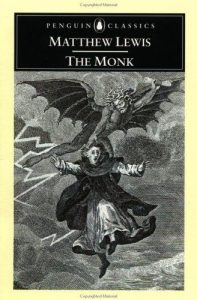
Posted by Steven on 1/11/2013, 12:22:16, in reply to “Re: The Monk and Seven Gothic Tales”
My other proto-science fiction, utopian, gothic, fantasy, horror readings in the last two months and planned:
Finished:
Utopia by Thomas More, 1516
The City of the Sun by Tomasso Campanella, 1602
New Atlantis by Sir Francis Bacon, 1627
The Man in the Moone by Francis Godwin, 1638
Voyage to the Moon by Cyrano de Bergerac, 1657
The Blazing World by Margaret Cavendish, Duchess of Newcastle, 1666
The Southern Land, Known, by Gabriel de Foigny 1693
Iter Lunaire by David Russen, 1703
The Consolidator by Daniel Defoe, 1705
A Voyage to Cacklogallinia by Samuel Brunt, 1727
Niels Klim’s Journey to the World Under Ground by Ludvig Holberg, 1741
Planned:
The Life and Astonishing Adventures of John Daniel by Ralph Morris, 1751
The Life and Adventures of Peter Wilkins by Robert Paltock, 1751
The Micromegas by Voltaire, 1752
The Devil in Love by Jacques Cazotte, 1772
The Old English Baron by Clara Reeve, 1777
The Adventures of Caleb Williams by William Godwin, 1794
The Italian by Ann Radcliffe, 1797
Wieland; or, The Transformation by Charles Brockden Brown, 1798
…and more
There are other titles that would belong on this list but I read them in recent years, so I’m not re-reading them. For example, Gulliver’s Travels, The Castle of Otranto, Vathek, and The Mysteries of Udolpho.
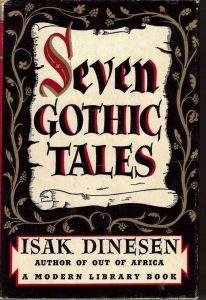
Posted by guillermo maynez on 1/11/2013, 14:06:16, in reply to “Re: The Monk and Seven Gothic Tales”
My Amazon review of “Utopia” is old, much more limited and not as good as yours, but here it goes anyway;
80 of 95 people found the following review helpful
4.0 out of 5 stars “In no place”, January 31, 2001
This review is from: Utopia (Penguin Classics) (Mass Market Paperback)
As a social critique of English and European society, this book is very effective. It is also beautifully written. But it should not be read as the depiction of what society should be like. Thomas More, a wise and brave man executed by orders of Henry VIII, knew that Utopia shouldn’t be taken very seriously, and that is exactly why he used the word Utopia to name his famous island. Utopia, in latin, means “in no place”, that what can not exist. The problem is that this simple fact was not understood by many. And so, “utopianism” was born. The preposterous belief that there is a universal and definitive form of organization for human societies led to disasters like Nazism and Communism. By organizing everything perfectly (according to who?), these systems become the negation of the very essence of the human being: its innate imperfection and its need to be constantly changing, always on the move. It is simply impossible that some political, economic and social system resolves once and for all the troubles of humanity. Problems are exactly what make humans progress and reform constantly. Besides, the State has proven indispensable for survival, but also limited in what it can accomplish (in Utopia, the State provides everything for everybody). Stagnant societies degenerate and disappear, or remain to live from the charity of dynamic societies. Closed, perennial social systems, simply don’t work: there is abundant proof in history, ancient or recent. “Utopia” is an excellent account of human shortcomings and a good tale, but it is not, nor was intended to be, a recipe with solutions for the world. Aldous Huxley and George Orwell have shown us what might happen in a supposed Utopia. The Communist world was worse. And Anthony Burgess clearly shows us in “A Clockwork Orange”, that in “perfect” societies, the only way to practice freedom is violence. Let’s not be perfect.
~
Posted by Steven on 4/11/2013, 10:06:30, in reply to “Re: The Monk and Seven Gothic Tales”
: I would be interested to read your views on all of the
: books you listed.
Okay, here’s the first batch:
The City of the Sun by Tommaso Campanella
Written in Italian 1602, first published in Latin translation 1623
Unattributed and undated English translation from Project Gutenberg
The City of the Sun is a very short utopian novel written by a man who took his ideas very seriously. He wrote the novel while in prison for having tried to establish a community based on the concepts he was now describing.
The fictional framework for the story is sparse and simple. A Genoese sea-captain has returned from a voyage and is relating his discoveries to his host. He tells of a previously unknown land he discovered near Taprobane (Sri Lanka) that lies directly on the equator. Coming ashore the Captain is met by a party of armed men and women and escorted to their capital, the City of the Sun.
The City is built on a hill, rising in concentric walled rings like a giant wedding cake. Within each ring are built houses that look to the Captain like palaces and are interconnected by graceful arches and aerial walkways. The walls themselves are profusely decorated with images and artifacts that represent the accumulated wisdom of the inhabitants. At the summit of the city is an open plain large enough for the entire population to congregate, and at the very center an open-air temple surmounted by two great globes depicting in full detail the earth and the heavens.
The nation is ruled by a priest whose title is “Hoh.” He is accounted the wisest among the citizens and is elected by life. Serving under Hoh are three high magistrates: “Power” (in charge of military affairs), “Wisdom” (responsible for the sciences), and “Love” (domestic affairs, education and agriculture). They are also elected for life. Under each of these is a hierarchy of elected magistrates with more specialized functions. Hoh, Power, Wisdom and Love are all men, but the lesser magistrates are a mixture of men and women. All residents over age 20, male and female, are eligible to vote and do so in a grand Council meeting where the entire population is assembled around the temple.
The City is a communist society where there is no private property, no money, and no family structure. Reproduction is under the control of a magistrate. “He sees that men and women are so joined together, that they bring forth the best offspring. Indeed, they laugh at us who exhibit a studious care for our breed of horses and dogs, but neglect the breeding of human beings.” Men and women may share each other’s company as they please, but unauthorized sexual intercourse is severely punished. Children are nursed by their mothers for two years, then taken away and raised in classes by tutors. They are sorted into various occupations according to their aptitudes, with the brightest becoming scientists and astrologers, the simplest being sent to work in the farms.
Citizens dress in identical garments and are assigned to communal housing by sex. They are moved every two years. Men and women eat together in large dining halls while listening to lectures on scientific topics. Learning is a passion for them, and the city walls are their text books. Children study by walking the circumference of the City and reading the walls, and this helps keep them physically fit as well. The nation is so obsessed with physical fitness that seated pastimes such as chess are forbidden.
Though the City has only just been discovered by Europeans, they have been aware of Europe for centuries and have sent explorers to all corners of the globe, learned every human language, and accumulated the wisdom of every culture. They have technologies far in advance of any other nation, including ships that move without oars or sails, and their military is both fierce and a source of great pride to the City.
The City of the Sun is a work full of novel and sometimes quirky ideas. One wishes Campanella had filled in more details, especially on the lives of average citizens. He obviously drew upon both Plato’s The Republic and Thomas More’s Utopia for some aspects of his City, but was more radical than either in his social organization. At the same time, as a lifelong believer in astrology, Campanella added a mystical aspect to his utopia that to a modern reader seems totally out of synch with its scientific accomplishments.
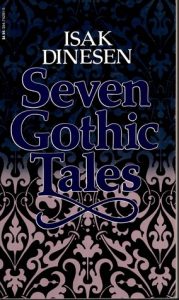
EPSON MFP image
New Atlantis by Francis Bacon
First published in Latin 1624, in English 1627
Unfinished
“We sailed from Peru, (where we had continued for the space of one whole year) for China and Japan, by the South Sea…” With no more preamble than this, Francis Bacon begins his account of the discovery of the remarkable island nation of Bensalem. The narrator never introduces himself, and we don’t even know his nationality, only that he and his shipmates are Europeans.
After weeks of contrary winds and storms, the ship is desperately in need of provisions, and many of the crew are sick. They are in previously unexplored regions when they come upon a large island or continent and enter the harbor of a fine city. The inhabitants, who seem to be fluent in several European languages, warn them off, saying they want nothing to do with strangers. But when the explorers explain their desperate plight, they are given reluctant leave to re-provision their ship. The islanders finally begin to warm up to them when they learn that the narrator and his companions are devout Christians.
They learn that the island nation is called Bensalem, and that it already knows everything about Europe even though the Europeans know nothing about it. The narrator is invited to make inquiries about Bensalem, and his first question–which pleases his hosts to no end–is how they came to be Christians in such a remote part of the world. Their answer is that a miraculous ark brought them a copy of the Bible shortly after the resurrection of Christ. This remarkable Bible could be read by anyone in his own language and contained books of the New Testament that hadn’t actually been written yet.
Explaining further the history of their land and how they came to know so much of the world, they say that “about three thousand years ago, or somewhat more, the navigation of the world, (especially for remote voyages,) was greater than at this day.” This was the time of Atlantis, another name for the Americas. Atlantis actually had two civilizations, one in Mexico and one in Peru. They were the enemies of Bensalem and had attempted to conquer both it and Europe. But a massive flood destroyed both Atlantean nations, and the survivors reverted to barbarism. Bensalem, meanwhile, chose to remain unknown to Europe and China, but for centuries has sent spy missions to all parts of the globe collecting all the cultural and scientific knowledge of the world.
Inquiring after their social life, the narrator learns that the people of Bensalem are thoroughly devout and chaste. Prostitution is unknown, adultery is rare and severely punished, and “as for masculine love, they have no touch of it.” The native goes on to tell the narrator: “I have read in a book of one of your men, of a Feigned Commonwealth, where the married couple are permitted, before they contract, to see one another naked.” This is a reference to Thomas More’s Utopia, the forerunner of Bacon’s novel. The citizen goes on to say that in Bensalem they have improved upon this system by permitting only a female friend of the bridegroom to see the bride in her bath, and vice versa.
The pride of Bensalem is its institute of scientific research known as Salomon’s House. The narrator is permitted an interview with one of the Fathers of Salomon’s House, and he is told of the wonders that they have discovered or developed. They include: improved crops and livestock developed not only by breeding but by spontaneous generation from inanimate matter, artificial light, hearing aids, telephones, human flight, submarines, and more. (Of course I am using modern terms for what Bacon describes by function.)
At this point the novel comes to an abrupt end. We learn nothing about the government of Bensalem except that it has a king. They apparently use money, but that’s all we can deduce about their economy. Of their personal lives we learn very little except that they are devout and chaste Christians and they honor the male heads of large families with a special ceremony. As a utopian novel, New Atlantis is quite disappointing. It appears to be nothing more than an idealized version of Bacon’s own culture. But what stands out in the novel is the litany of scientific advances, most of which wouldn’t be realized for centuries. It’s remarkable that almost everything Bacon imagined has come true in some form or another.
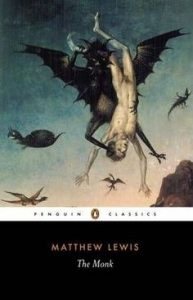
The Man in the Moone by Francis Godwin
Written in the 1620s
First published posthumously 1638
The Man in the Moone is an early work of science fiction that is remarkable for how accurately the author Francis Godwin, and Anglican bishop, understood and conveyed many of the scientific principles of astronomy and interplanetary travel.
“O Reader prick up thy Ears, and prepare thyself to hear the strangest Chance that ever happened to any Mortal,” says Domingo Gonsales, a diminutive Spaniard who says of himself that “my Stature is so little, as I think no Man living is less.” Having killed a man in a duel, Gonsales is compelled to leave Spain and his family behind. He goes on a trading voyage to the East Indies and meets with great success. Returning to Spain in 1599 a wealthy man, he takes ill and is put ashore on the island of Saint Helena in the South Atlantic.
After a long but successful recovery, Gonsales discovers on Saint Helena an unusually powerful and intelligent but tame variety of swan. On a whim, he invents a type of harness which allows teams of swans to carry a burden from one point of the island to another. Excited at the prospect of being the first man to take to the air, he rigs a chair for himself and–thanks to his small size and weight–finds that the swans have no trouble carrying him aloft. A series of adventures and emergencies ensues, ending with Gonsales’s using his swans in a desperate attempt to escape with his life.
The swans, having a mind of their own, take Gonsales straight up through the clouds, and it isn’t long before he realizes they are heading for the Moon! It turns out that this is their customary pattern of migration. In twelve days the intrepid Spaniard is landed on the Moon and greeted by a party of Moon Men.
Assuming that there would be breathable air and moderate temperatures both on the Moon and in the space between Earth and Moon is Godwin’s big mistake. Otherwise he gets most things right, if a bit out of proportion: the diminished gravity and eventual weightlessness as his craft coasts most of the way between the worlds, the fact that the Earth would appear larger from the Moon than the Moon does from the Earth, the phases of the Earth as seen from the Moon and the illumination of the Moon by earthlight during the solar night, the lighter gravity on the Moon and the fact that this would allow plants and animals to grow to larger sizes, and more.
The Moon people welcome Gonsales as soon as they realize he is a fellow Christian, but that’s all the author has to say about religion. The entire Moon–most of which is covered by ocean–is a single kingdom ruled by an aristocracy based on height. The taller a Moon Man is, the smarter he is and the longer he will live. Short Moon people are looked down upon socially as well as literally, and extremely short children are abandoned on Earth in exchange for tall Earth children. (Gonsales assumes this happens somewhere in North America because the Moon Men all heavy smokers and must get their tobacco on these child-swapping trips.)
The Moon is a paradise of peace and contentment, but not for any reasons that might be exported to the Earth. Food grows in such natural abundance that they don’t need to work for it, and there is no jealousy because “their Females are absolute Beauties, and by a secret Disposition of Nature, a Man there having once known a Woman never desires any other.”
Godwin wrote at a time when the Catholic church was still opposing Copernican astronomy and putting men like Galileo on trial, so it’s curious that he made the hero of this pro-Copernican work a Spaniard and presumably a Catholic. Though Godwin’s Lunar civilization has some of the characteristics of Thomas More’s Utopia, The Man in the Moone can’t be considered much of a work of utopian fiction since the reasons for the Moon’s happiness are unique to that world and wouldn’t apply to Earthlings. Nor does this novel appear to have a satirical purpose. But it is an amusing adventure story that displays a remarkable astuteness in working out the implications of scientific theories that were then very new, controversial, and imperfectly understood.
Voyage to the Moon by Cyrano de Bergerac
First published posthumously 1657
Undated English translation by Curtis Hidden Page
Suspecting that the moon is just another world like the earth, and that its inhabitants have visited us, the adventurer Cyrano de Bergerac devises not one, but several means of paying a return visit. His first attempt is based on the known fact that dew is attracted to the morning sun. “I attached to myself a number of bottles of dew, and the heat of the sun, which attracted it, drew me so high that I finally emerged above the highest clouds.” But this has him headed for the sun, not the moon! He realizes his error and releases enough dew to return to earth.
His final attempt, one that is more accident than intention, involves a contraption with rockets attached to it so that they fire in stages before falling away. Cyrano is left drifting through space and heading for a fatal impact with the moon, but he is fortunate enough to come straight down into the Garden of Eden where his landing is softened by the boughs of the Tree of Knowledge.
The Garden is tenanted by a handful of prophets who explain to Cyrano how Adam and Eve came to be expelled to the earth. Cyrano is about to learn the greatest mysteries of all, when it is his bad timing to make a rather crude joke involving the Almighty. The prophets don’t share his sense of humor, so he is expelled to wander the surface of the moon.
The moon people are giants who walk on all fours. Their speech resembles the music of the flute. They take Cyrano to be some sort of monkey, so he is captured and used to entertain passers by. He is rescued finally by a being who is one of the natives of the sun. Sun people don’t have bodies in the way can understand, so they animate the bodies of the recently dead of other races. This particular sun man says he has spent much time on earth as a teacher and adviser, most recently with Tommaso Campanella (author of The City of the Sun). He takes Cyrano to the moon’s royal palace where he becomes something of a pet of the king’s daughter. There he meets a Spaniard named Domingo Gonsales, whose voyage to the moon by swan-power was decribed in Francis Godwin’s book The Man in the Moone. Gonsales had returned to the moon because “He had not been able to find a single country where the imagination was free.”
Cyrano finds the culture of the moon people to be in many ways the opposite of Europe’s. They venerate the young, and the father becomes a servant to his son. They do not use money, but pay their bills with poems. They’ve found that smelling food gives one more nutrition than eating it, and avoids those excretory complications. They honor the body and have made virginity a crime. The higher rank a person holds, the fewer clothes he wears; royalty and sages go about naked. It is a mark of honor to expose one’s genitals, and when Cyrano says that in his country men of rank wear swords, they are indignant: “O little man, how insane the nobles of your world must be if they pride themselves on a tool used by executioners, one that is made only to destroy and that is, in the end, the sworn enemy of all that lives. And they hide, on the contrary, a part of the body without which we would not exist, one that is the Prometheus of every animal and tirelessly repairs the weaknesses of nature! How unfortunate a country is where the marks of generation are ignominious and those of annihilation are honorable!” Christianity gets much of the blame for this, as one moon man observes: “I am indeed astounded at how much the religion of your country is against nature and is jealous of all the pleasures of men.”
If Cyrano de Bergerac is remembered for anything these days, it is for the size of his nose. Moon people also have large noses. They say that “a large nose is a sign on the door of our face that says ‘Herein dwells a man who is intelligent, prudent, courteous, affable, noble-minded and generous’.” Boys born with a short nose are castrated so there is no chance they can pass on their unfortunate infirmity to another generation.
Of the many scientific and technical theories discussed in this novel, it must be noted that Cyrano de Bergerac invented the idea of the audio book and the iPod. Lunar people do not have a written language, but record their books on miniature devices like music boxes. Cyrano was given several of these books, and marvelled at how he could “read” without occupying his hands or his eyes. “I attached the books to my ears as pendants and went for a walk in town.”
Near the end of the novel Cyrano has a debate with a young moon man who is an atheist. Among the moon man’s arguments is the observation of God that “if he gave me a mind incapable of comprehending Him, it wouldn’t be my fault but His, since he could have given me one capable of doing so.” Cyrano the character defends the faith, but it’s fairly obvious from all that has come before that Cyrano the author is more interested in the arguments against God than those in favor.
Voyage to the Moon is quite entertaining and inventive. It’s obvious from his reference to earlier works that Cyrano de Bergerac sought a place in the growing body of utopian science fiction, though he doesn’t offer any radical new social ideas. His novel is a broad satire of religious narrow-mindedness and puritanism, and many of his barbs still hit their mark today.
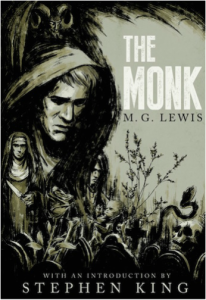
The Description of a New World, Called the Blazing-World by Margaret Cavendish, Duchess of Newcastle-on-Tyne
First published 1666
The Blazing World is perhaps the earliest published work of science fiction by a woman. It’s ironic that a book with its title should have been published in London the same year as the Great Fire of London, but only a coincidence.
Margaret Cavendish was a member of the English court and a patroness of the sciences. She published under her own name a wide variety of works on philosophy, science, drama, poetry, and the novel The Blazing World, which was intended to showcase some of her ideas on science and political philosophy.
The novel begins with the story of a merchant who falls in love with a high-born lady. He knows that because of his lowly station he can never openly declare his love for her, so out of desperation he abducts her and carries her away in his ship. The ship, however, is caught up in a great storm and blown into the polar regions where no ship has sailed before. The cold is so intense that everyone freezes to death, “the young Lady onely, by the light of her Beauty, the heat of her Youth, and Protection of the Gods, remaining alive.” The ship was “not onely driven to the very end or point of the Pole of that World, but even to another Pole of another World, which joined close to it.”
In the new world the derelict ship encounters a group of bear-like men, who rescue the lady and treat her kindly. Sailing south, the bear-men turn her over to some fox-men, and by such stages she eventually comes to the palace of the Emperor who rules this world. By this time she has learned their language. The Emperor (a human) falls in love with the lady, marries her, and gives her full power over his world as his equal. The Empress’s first project is to form academies of the arts and sciences and call for a report on the state of scientific knowledge in her new realm. “The Bear-men were to be her Experimental Philosophers, the Bird-men her Astronomers, the Fly- Worm- and Fish-men her Natural Philosophers, the Ape-men her Chymists, the Satyrs her Galenick Physicians, the Fox-men her Politicians, the Spider- and Lice-men her Mathematicians, the Jackdaw- Magpie- and Parrot-men her Orators and Logicians, the Gyants her Architects, &c.”
Almost half of the novel consists of the reports of these various advisers and the ensuing debates between them and the Empress. There isn’t much plot here, but it’s a good overview of the state of scientific knowledge in mid-17th century Europe. The Copernican view of the solar system was still under debate. The telescope and microscope were both new inventions. As for the nature of the multiple conjoined worlds, it seems that there are an infinite number of worlds connected at their poles like pearls on a string. Each has its own sun, moon and stars, varying from one world to the next in configuration and brightness. The stars of the new world are so bright that it never knows darkness, and is therefore called the Blazing World.
After conferring with her scientists, the Empress meets with the immaterial spirits who dwell in the air. She learns how souls can move from body to body, and even from world to world. When she decides she needs a personal scribe, they recommend a certain Duchess of Newcastle from another world. (It is only at this point that we realize that the world the Empress originally came from was not our own.) So Margaret Cavendish’s soul is fetched from England, which is how she came to learn of the events she relates in her book. She and the Empress become great friends, and continue to pay soul-visits back and forth between the two worlds. When news comes that the Empress’s home country back on her native world is on the verge of being conquered by its enemies, they confer on how to send military assistance from world to world. There’s a marvelous passage where they consider sending a host of immaterial spirits to reanimate the recently dead and create a zombie army, but they eventually rely upon a more “conventional” expeditionary force of fish-men, worm-men, and bird-men.
As far as the Duchess of Newcastle’s utopian vision is concerned, it can be summed up in two words: absolute monarchy. The Blazing World is the happiest and most peaceful of worlds because it is ruled by one man and his consort. Their closest advisers are all eunuchs, and their palace is an unassailable island fortress. Strangely, the author has very little to say about the role of women in society, and her heroine seems content when her advisers tell her that in their world the women are not allowed to attend religious services, but stay home “For Women and Children most commonly make disturbance both in Church and State.”
The Blazing World is not very entertaining as a novel, but it is still an interesting specimen of its era and certainly a landmark in women’s fiction.
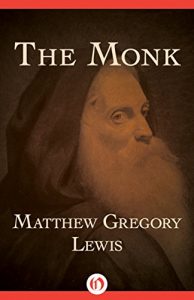
The Southern Land, Known by Gabriel de Foigny
First published in French 1676
English translation by David Fausett 1993
Gabriel de Foigny was a French Franciscan monk who was defrocked at about age 36 for licentious behavior. He fled to Calvinist Geneva where he renounced Catholicism and took up a career teaching and writing. But his expectation that Protestant authorities would be more open-minded than Catholics was disappointed when he was persecuted for heretical ideas, drunkenness, and sexual misbehavior. His response to this was to write The Southern Land, Known, which is a very strange combination of utopia, dystopia, and religious allegory.
The story is told by Nicholas Sadeur, who was born at sea to French parents but shipwrecked and orphaned by a storm off the Spanish coast. Sadeur is an hermaphrodite, with both male and female organs, but he self-identifies as a man (and I will follow the author’s lead in using the male pronoun). As a young man, Sadeur is kidnapped by pirates. Their ship is wrecked, and he is rescued by merchants bound for the East Indies. After visits to the Congo and Madagascar, the merchant vessel is driven south and westward across the Indian Ocean. It, it turn, is wrecked not far from the shore of the rumored great southern continent, the Terra Australis, or Australia. Sadeur is the only survivor, and after battling giant carnivorous birds, he is taken in by the natives of this exotic land.
The Australians are manlike, but eight feet tall with six fingers and toes and an occasional extra set of arms. Like Sadeur himself, they are all hermaphrodites–a fact easily ascertained because they wear no clothing. He later learns that his intersexuality, as well as the fact that he was washed ashore naked, saved his life. The Australians despise “half men” and consider clothing a form of blasphemy. They don’t even need coats because Australia is a land of perfectly mild climate where it never even rains. Fruit is so plentiful (notwithstanding the lack of rain!) that the natives never need to work. They don’t even have houses, since they sleep just fine on the open ground. Nor are they bothered by pests, since insects and disease are unknown in Australia.
When it comes to the social, political and religious institutions of the Australians, it is difficult to tell at times whether Foigny wants us to admire the Australians for their peaceful efficiency, or laugh at them as parodies of Calvinism. In religion, for example, the Australians practice a form of pantheism that holds all life sacred, yet they make it a crime to discuss their religious beliefs, and they make desperate war against the neighboring kingdom of non-hermaphrodites. They hate their carefree lives so much that they almost always end them in ritual suicide–a practice so compelling that the law requires them to produce at least one offspring before they are allowed to kill themselves, otherwise the race would have long ago destroyed itself.
Exactly how the Australians reproduce is another forbidden topic, and Sadeur never learns the answer even though he lives among them for 35 years. When Sadeur shows signs of sexual arousal, his hosts threaten to put him to death. There is a suggestion that the hermaphrodite condition of the narrator and the Australians may be a commentary on the poor treatment of women in Europe at that time. Sadeur “was forced to admit that the great empire that the male had usurped over the female was rather a form of tyranny than a just cause.”
Foigny’s Australia is a carefree communist utopia, yet it is made carefree largely by impossibly benevolent surroundings and the absence of sexual tension. The inhabitants’ response to their seemingly perfect existence is to despise it, yet by censorship and xenophobia they prevent any possible new ideas or challenges that might make life bearable. It is a strange world indeed. Like most utopian fiction, the bulk of the novel is devoted to description and debate, but there are some fine action scenes in the opening and closing chapters.
A final note: In 1692 a second edition of The Southern Land, Known appeared in French. It was severely abridged to remove sexually explicit passages, some of the more extreme violence, and potentially heretical religious ideas (whether the bowdlerization was by Foigny himself or someone else is unknown). This edition was translated into English and was the only English edition available until David Fausett’s 1993 translation. The 1692 edition is also still being published in French. If you want to read the author’s uncensored work, be sure to get the original 1676 version.
~
Posted by Steven on 4/11/2013, 10:16:16, in reply to “Re: The Monk and Seven Gothic Tales”
And the rest to date…
Iter Lunaire; or, A Voyage to the Moon by David Russen
First published 1703
Iter Lunaire is not a novel, but rather an extended critical review of Cyrano de Bergerac’s novel Voyage to the Moon, first published almost a half century earlier. Francis Godwin’s 1638 novel The Man in the Moone is also discussed. We know very little about David Russen except that he was a teacher, but apparently he took Cyrano de Bergerac’s work as a serious scientific proposal and set about analyzing it almost page-by-page. That Cyrano intended his work to be taken so seriously is highly doubtful.
Russen takes a very methodical approach to the problem of spaceflight. “Two things seem to impede our Journey thither, the propensity of all Earthly Bodies composed of Matter to tend downwards, which causeth in them an Ineptitude to ascend, and the Medium through which they are to pass, which is unfit for Animals of this Earth to breathe in.” He aptly considers that it will take considerable force to overcome the Earth’s gravity, and that the bigger your vehicle, and the more provisions you take with you, the more propulsive power you will need.
The author rejects Cyrano’s ideas of ascending by means of dew-filled bottles or smearing oneself with bone marrow–but he shows himself a true scientist by saying that these theories should at least be tested before being abandoned altogether. Russen fixates on the notion that for a body to be set in motion, it has to have something to push against. He therefore rejects all types of free-flying apparatuses.
Russen’s own plan for reaching the surface of the moon–one he admits can never be put into practice–is to build a giant spring which would carry a man on its very tip. Released at exactly the right moment considering the rotation of the earth and the moon’s revolution around it, the spring, while still attached firmly to the earth, would reach exactly the right distance to deposit its passenger on the moon.
Cyrano’s traveler finally makes his successful ascent from earth’s surface, quite accidentally, by means of banks of fireworks which we would now describe as a multi-stage rocket. Strangely, Russen all but ignores this method. And he finally dismisses the possibility of space flight altogether because the aether of interplanetary space is unbreathable. It’s a sensible conclusion, but an unimaginative one since the use of diving bells in his own day should have given him the idea of taking your air along with you in an enclosed vehicle.
Russen goes on to debate the nature of the civilization Cyrano’s traveler finds on the moon, again completely missing the point that Cyrano’s purpose was satire, not science. Russen’s analysis consistently shows him to be methodical, open-minded, but lacking in imagination.
A couple of Russen’s theories are entertaining enough to be worth a mention. One is that the Americas must have risen up from the sea only shortly before Columbus stumbled upon them; otherwise our wiser ancestors, the Greeks and Romans, would surely have known about them. His other amusing notion is that the small spheres we see rising in a glass of beer or champagne are not bubbles of air, as some fools insist, but tiny animals. It is their vitality which makes these drinks so refreshing. Flat beer, on the other hand, isn’t good because “dead insipid Liquors do not inebriate or heat the Body, because those Animals are dead in the Liquor, and corrupted.”
Iter Lunaire is one of a number of titles included in a new series of ebooks edited by Ron Miller and published by Baen Books. Unfortunately the formatting and proofreading of this particular title were very poor. There were obvious scanning errors on almost every screen, and a couple of passages were completely unintelligible. Miller’s afterward pertained to the series as a whole, not this title, and his few end notes were not linked to the text, so it was awkward to get to them. I’ll be cautious about purchasing any more ebooks in this series.
Altogether, Iter Lunaire is a curiosity of minor importance. Anyone interested in it should definitely read Cyrano de Bergerac’s and Francis Godwin’s novels first, but I can’t say that Iter Lunaire added to my appreciation or understanding of them. It would be more valuable as part of an historical study of the idea of spaceflight.
The Consolidator; or, Memoirs of Sundry Transactions from the World in the Moon by Daniel Defoe
First published 1705
The Consolidator, Daniel Defoe’s first novel, is a satire that has been characterized as a work of science fiction because it takes place on the moon, but it is really just an overgrown political tract. The narrator journeys across our globe, ending up in China where he finds a kingdom scientifically far in advance of his native England. They even have a machine that can fly to the moon. It is called the Consolidator, but the details of its construction reveals that it is just a strange metaphor for the English Parliament.
The traveler goes to the moon and finds that it is almost an exact replica of the Earth. He goes to a “northern country,” which seems to bear an eerie resemblance to England (though the narrator insists it is different). There he meets a philosopher who recounts in considerable detail–and with strong opinions–the last 60 years or so of his country’s history.
The first quarter of the novel, while Defoe is describing the lunar society, is full of witty remarks such as: “Also you have here a Muse calcin’d, a little of the Powder of which given to a Woman big with Child, if it be a Boy it will be a Poet, if a Girl she’ll be a Whore.”
He also recommends that all “Statesmen, P—-t-men, Convocation-men, Phylosophers, Physicians, Quacks, Mountebanks, Stock-jobbers, and all the Mob of the Nation’s Civil or Ecclesiastical Bone-setters, together with some Men of the Law, some of the Sword, and all of the Pen” should go to the moon. “But above all, how much more beneficial it would be to them that stay’d behind.”
But the remaining three quarters of the novel–an opinionated recitation of English history from Cromwell to Queen Anne but calling nothing and no one by its proper name–is tedious and unrewarding. Defoe had been imprisoned a few years earlier for political pamphlets deemed seditious, so that’s probably why he felt he had to “disguise” his opinions as lunar history. The opinions seem to be largely in favor of religious tolerance, but it would take a reader fairly well versed in 17th century English history to understand most of his references and ideas. Unfortunately Defoe did not give his novel a plot or characters, so there’s little to entertain a reader who doesn’t have extensive background in that era.
A Voyage to Cacklogallinia, with a Description of the Religion, Policy, Customs and Manners of that Country as by Captain Samuel Brunt
First published 1727
Author’s real identity unknown
By the early 18th century there had been many published satires and utopian novels featuring imaginary voyages that discover and describe strange races and civilizations. Some of them went to previously unexplored parts of our world, while others went instead to the moon. A Voyage to Cacklogallinia is perhaps unique in that it does both. Its narrator, Captain Samuel Brunt, first discovers the Empire of Cacklogallinia somewhere in South America, then he accompanies the Cacklogallinians on their first flight to the moon, discovering yet another strange culture.
The authorship of this novel remains a mystery. Jonathan Swift is a possibility, as are Daniel Defoe, John Arbuthnot, and other like-thinking and imaginative English writers of the period.
Samuel Brunt begins his story with his arrival in Jamaica as a merchant seaman on an English slave ship. He is with a group of sailors who are attacked by a band of fugitive slaves. The others are killed, but Brunt’s life is spared because of a kindness he had once shown to one of the slaves. He is held prisoner by the group, which eventually puts to sea in in canoes to escape pursuit. There they encounter a pirate ship and join up as crewmen, promising to put Brunt ashore at the earliest opportunity. But what ensues are sea battles, a mutiny, an epic storm and a shipwreck–all standard plot elements since Greek times for leaving a person helpless, alone, and irretrievably lost.
Brunt is now in Cacklogallinia, a country peopled by giant, intelligent chickens. Here begins the satirical phase of the novel. Once Brunt learns to speak the locals’ language, they exchange information about their respective countries. Brunt describes England in glowing terms, saying that the politicians are all honest and self-sacrificing, that physicians treat all patients equally regardless of their ability to pay, and that lawyers are few and devoted to justice. The Cacklogallinians admit that all is not as it should be in their country, and what follows is the satirist’s parody of the real England of his time.
After Brunt has lived among the Cacklogallinians for five years and risen to a position of trust in the Emperor’s court, he is asked to participate in a flight to the moon. A rooster scientist has theorized that there is gold in abundance on the moon’s surface, and before long shares are being sold in the venture. The reports Brunt sends back from the team’s mountain-top launch point are used to manipulate the share prices. Fortunes are made and lost before they even leave the ground. This is an obvious reference to the South Sea Bubble venture which created a scandal in England in the 1720s.
Brunt travels to the moon in a streamlined capsule towed by his chicken companions. Aside from the issue of an interplanetary atmosphere, the author’s assumptions on gravity, weightlessness, the distance to the moon, and travel time are fairly accurate. Brunt may be have been history’s first space-walker, when he emerges from his capsule in mid-flight to float alongside it. Once Brunt is on the moon the novel loses its satirical character and becomes a spiritual and moral fable. Brunt and the chickens are treated to a series of visions resembling those that Scrooge would see a century later in A Christmas Carol.
A Voyage to Cacklogallinia is a well-written and often entertaining satire that is neither obscure nor overlong. The author’s description of a chicken civilization–including their wars with the owls and the magpies–is clever and funny. Nor is his sympathetic account of escaped slaves in Jamaica to be overlooked.
Niels Klim’s Journey Under the Ground by Ludvig Holberg
First published in Latin 1741
Translated to Danish by Hans Hagerup in 1742
English translation from the Danish by John Gierlow 1845
In 1665 Niels Klim returns from school in Copenhagen to his native Bergen. He is approached by a pair of local scientists who ask him to explore a remarkable cave, they being too old and infirm to do so themselves. Niels agrees, and before long he is being lowered into the apparently bottomless cave. Then the rope breaks, and Niels is plunged alone into the darkness. He falls for a quarter of an hour before emerging into the hollow center of the earth. There he sees a miniature sun and planet. Niels drifts for days in orbit near this planet, until he is attacked by a giant bird and brought to the surface before driving off the bird. Next he is threatened by a large bull, so he attempts to climb the nearest tree. Much to Niels’s astonishment, the tree screams that she is being raped and slaps him in the face.
Of course Niels doesn’t know at the time what the tree is saying; it takes him a few months to learn the language of the intelligent trees who inhabit the planet Nazar. Once he has done so, he is put on trial for attempted rape. The wise trees acquit him of any crime, then find a job for him as courier (he being much faster on two feet than they are on roots) as he learns their laws and customs.
Niels soon journeys all over the surface of the small planet, finding that each species of tree has its own nation and its own characteristics. Eventually he will travel up to the “Firmament,” the underside of the earth’s crust, where he finds nations of intelligent monkeys, tigers, magpies, chickens, and even musical instruments. His fortunes will rise and fall. He will be, at times, a courier, explorer, adviser, inventor, wig-maker, porter, galley slave, fugitive, general and emperor. He will be threatened with dissection by doctors, pissed on by philosophers, and propositioned by lovesick trees, sows, monkeys, and a lioness. And, of course, he will learn many lessons about human nature from these non-humans.
Holberg mixes moral lessons with satire. He observes that adversity and hard work make us better people, while wealth and ease produce sloth, misery, and lax morals. He examines the roles of the sexes and shows that the wisest nations are those where the females and males are the most equal. Much of his satire is directed at the Catholic Church, though he also pokes fun at each European nation in turn. He ridicules all the higher professions and government institutions as well. One nation of trees, for example, is unfortunate enough to have a portion of its saplings born without heads. “On account of this natural defect, they are generally excluded from offices where brains are thought to be useful,” but “Occasionally one of them is taken up into the senate.”
Niels Klim’s Journey Under the Ground is an amusing example of the “fantastic voyage” utopian and satirical novels that were common in the 17th and 18th centuries. It is superior to some of the others I’ve read in that there is a continuous plot, not just a few pages of adventure followed by nothing but description. There is also great variety, and the reader doesn’t need to know a lot about the history and politics of the era to understand the satire.
~
Posted by guillermo maynez on 4/11/2013, 12:29:47, in reply to “Re: The Monk and Seven Gothic Tales”
Thank you for sharing these reviews! They are excellent. As a young man I read the Campanella, Bacon, and Bergerac books, but it was a long time ago and reading your reviews brought back my own memories from them. Most of the others sound quite interesting too. As a coincidence, I was just reading this morning an article in The Economist of last week, about current research into long-range interstellar voyage. If it survives in some form, it may one day amuse future readers, chuckling about what accurate or nonsense humans were coming up with when imagining space flight!
~
- Related:
- Book Reviews


